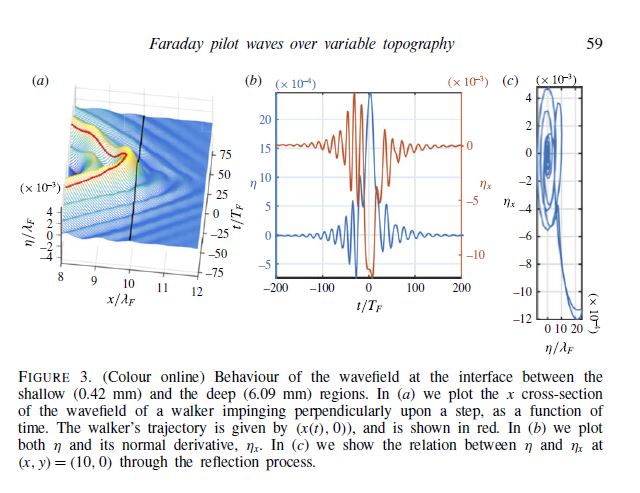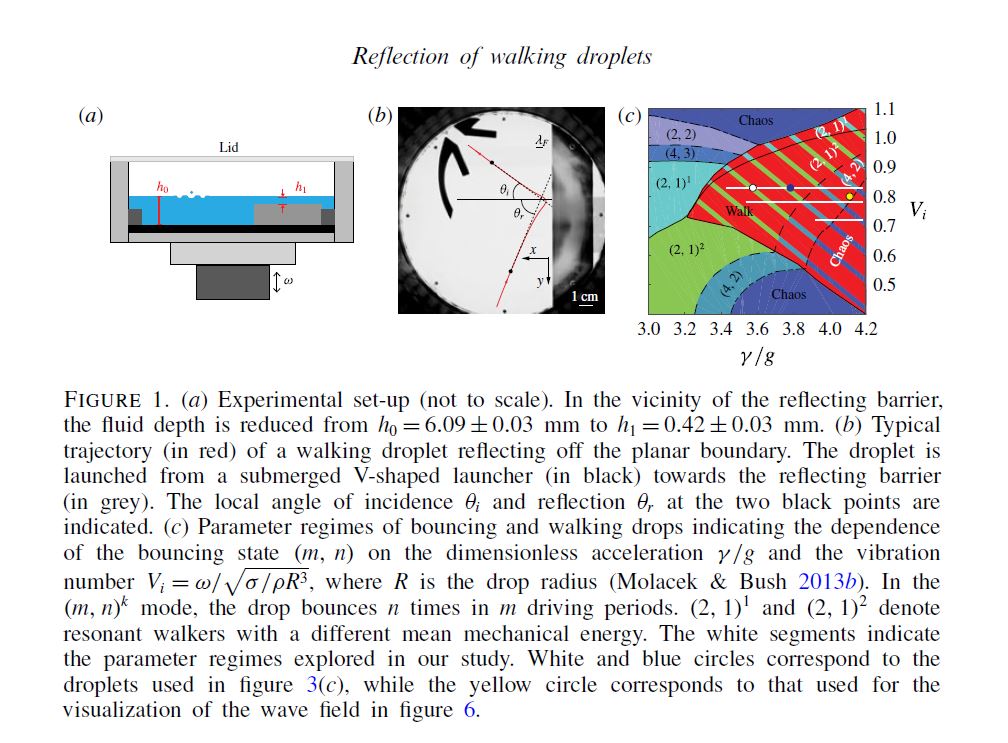Abstract : Couder et al. (Nature, vol. 437 (7056), 2005, p. 208) discovered that droplets walking on a vibrating bath possess certain features previously thought to be exclusive to quantum systems. These millimetric droplets synchronize with their Faraday wavefield, creating a macroscopic pilot-wave system. In this paper we exploit the fact that the waves generated are nearly monochromatic and propose a hydrodynamic model capable of quantitatively capturing the interaction between bouncing drops and a variable topography. We show that our reduced model is able to reproduce some important experiments involving the drop–topography interaction, such as non-specular reflection and single-slit diffraction.
Faria, L. M. (2017). A model for Faraday pilot waves over variable topography. Journal of Fluid Mechanics, 811, 51-66.



